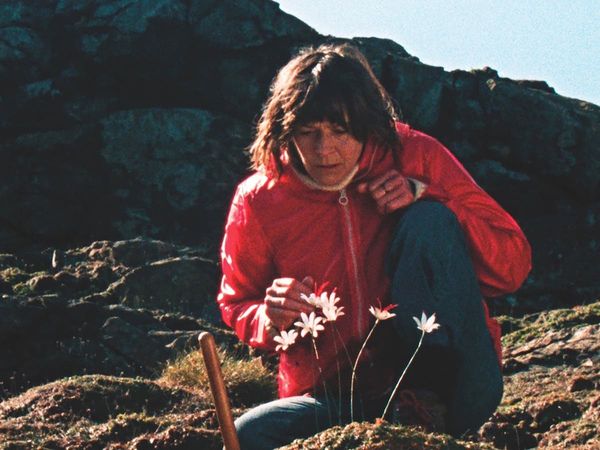
Film-maker Mark Jenkin originally intended to brand his superbly haunting follow-up to Bait (2019) as “a lost Cornish folk horror” film. He was persuaded to drop most of those descriptions: Enys Men isn’t lost (although it does feel like a recently unearthed magical relic from another era); it isn’t really horror (despite that ultra-creepy trailer); and the word “folk” is oddly misleading. That left “a Cornish film” – a simple phrase that perfectly encapsulates the myriad mysteries soaked into the dreamy, tactile landscape of this handmade gem. I could tell you that Enys Men (which means Stone Island) is Shirley Jackson’s The Haunting of Hill House as reimagined by the ghost of Nic Roeg; that it’s the cult 70s TV frightener The Stone Tape reconfigured through the inspirational prism of playwright and environmental activist Nick Darke; or that it owes more to the Japanese chiller Onibaba than to the “unholy trinity” of British folk-horror (Witchfinder General, The Blood on Satan’s Claw and The Wicker Man). But the more I think about it, the more “a Cornish film” says it all.
It’s easier to describe Enys Men in terms of colour (red and yellow are primal elements) than plot, since its distinct brand of clockwork-cranked, luxuriously saturated cinematic poetry is supremely resistant to precis. Suffice to say that it plays out on an island off the Cornish coast in the days before May Day, 1973. Mary Woodvine is quietly mesmerising as the unnamed volunteer stationed alone on the island, although as she says: “I’m not on my own.” Her life is ritual: walking the rugged cliffs, taking temperature readings around an outcrop of rare flowers; listening to a stone drop down a mineshaft; writing the day’s findings (“no change”) in her botanical diary. Back at the cottage, she fires up the growling generator (fuel supplies are low), makes the tea (also running out), and takes to bed with a copy of A Blueprint for Survival, an environmentalist text whose cover is emblazoned with the promise that after reading it “nothing quite seems the same any more”. The same could be said of this film.
The volunteer’s primary connection with the mainland is via radio, a mysterious medium (whether VHF transmitter or Dansette transistor) that conjures voices like spirits in a seance: fragmented conversations with a distant presence (“are you there?”); a distress signal (“Mayday! Mayday!”) from a wreck foretold; the heart-piercing voice of Brenda Wootton singing The Bristol Christ (from a poem by Cornish bard Charles Causley).
Meanwhile, the island seems to breathe the history of Cornwall – from the miners still haunting the darkened shafts below, to the Bal Maidens stomping the ground above, and the children who sing outside the volunteer’s cottage. Presiding over this time-slipping strangeness is a giant standing stone with a profound living-rock connection to the volunteer. No wonder the lichen that appears on those rare flowers also colonises her body, linking us back to an earlier trauma, played out in tantalising form by the enigmatic Flo Crowe.
In his current BFI season The Cinematic DNA of Enys Men, Jenkin juxtaposes the Cornish-set Children’s Film Foundation production Haunters of the Deep with the Australian eco-chiller Long Weekend (“their crime was against nature!”) and José Ramón Larraz’s atmospheric British psychodrama Symptoms. But it’s Lawrence Gordon Clark’s Stigma, made in 1977 as part of the BBC’s A Ghost Story for Christmas series, that offers the most intriguing touchstone, sharing with Enys Men an atmosphere of uncanny weirdness, closely aligned with the writings of MR James, or John Wyndham.
Some will be left confused – even frustrated – by a narrative that slips dextrously between dreams and reality (Lost Highway is also in that BFI season). Indeed, in one scene the volunteer burns her hand on a stove to bring herself back to the “now”, to the “real”. Such endeavours are self-defeating; better simply to let Enys Men drown you in its intensely sensory spell; to feel it rather than watch it.
What Enys Men “means” will differ for each viewer. For me, it is (like Bait) a richly authentic portrait of Cornwall, far removed from any tourist-friendly vision – a land defined by rugged industry (those miners are still down below), locked in an elemental struggle with the sea (a force that can both give and take life) and driven by a palpable sense of the past underpinning the future. I’ve seen the film three times so far, and I can’t wait to dive into it and be swept away again. Bravo!










